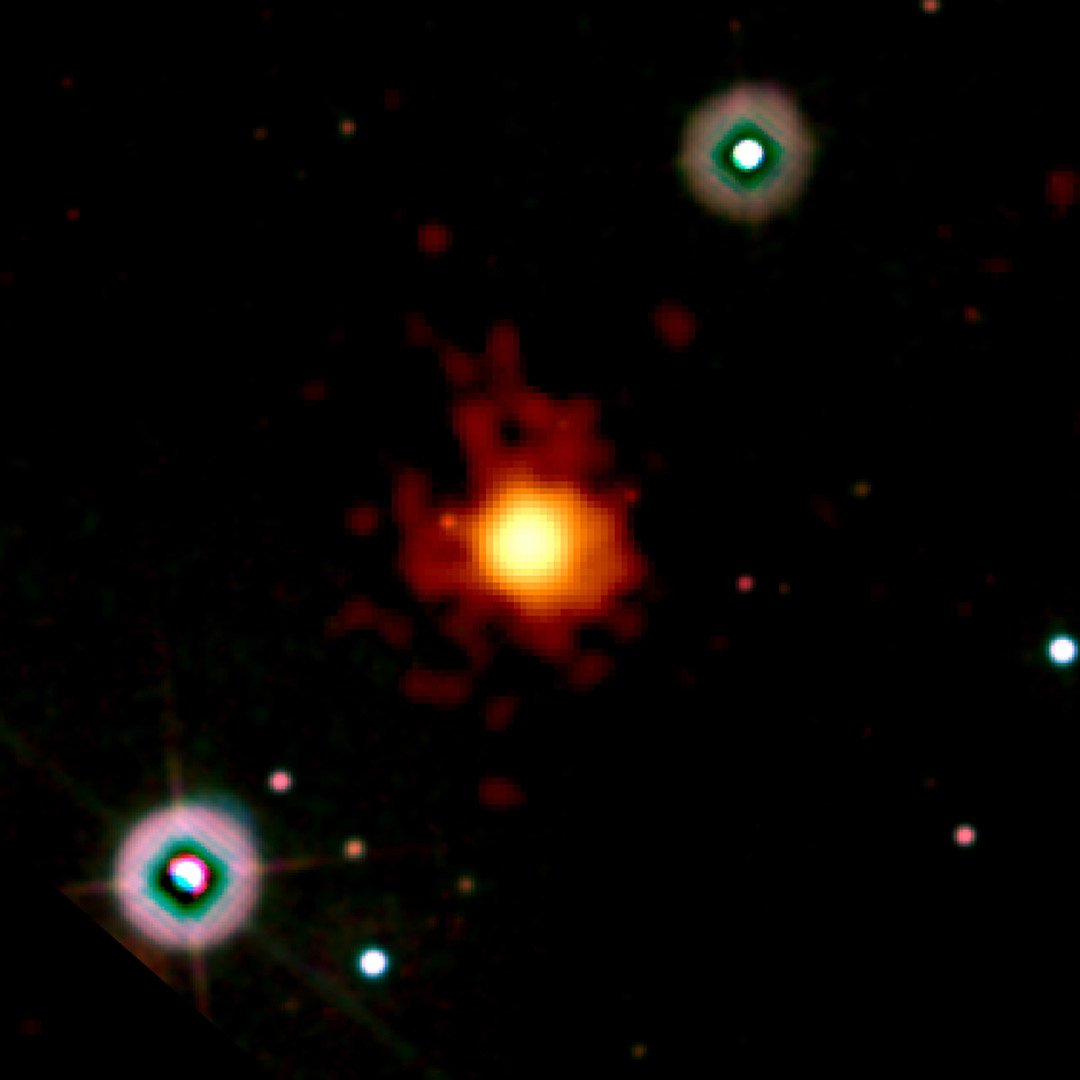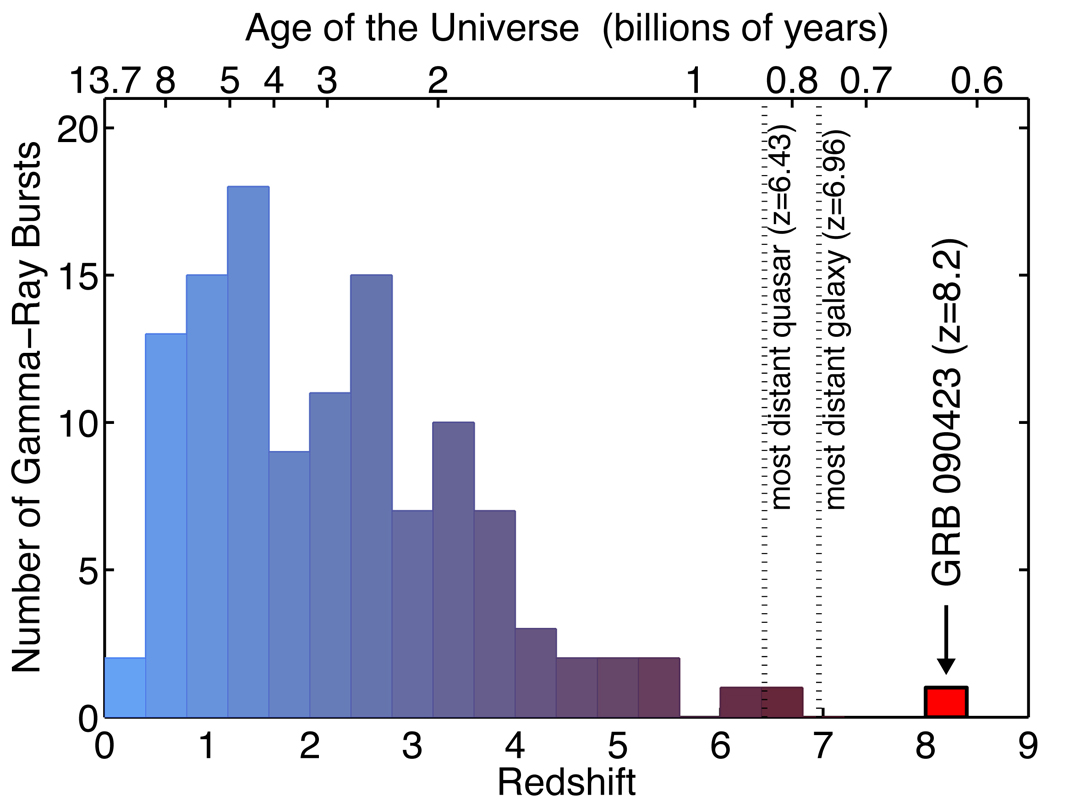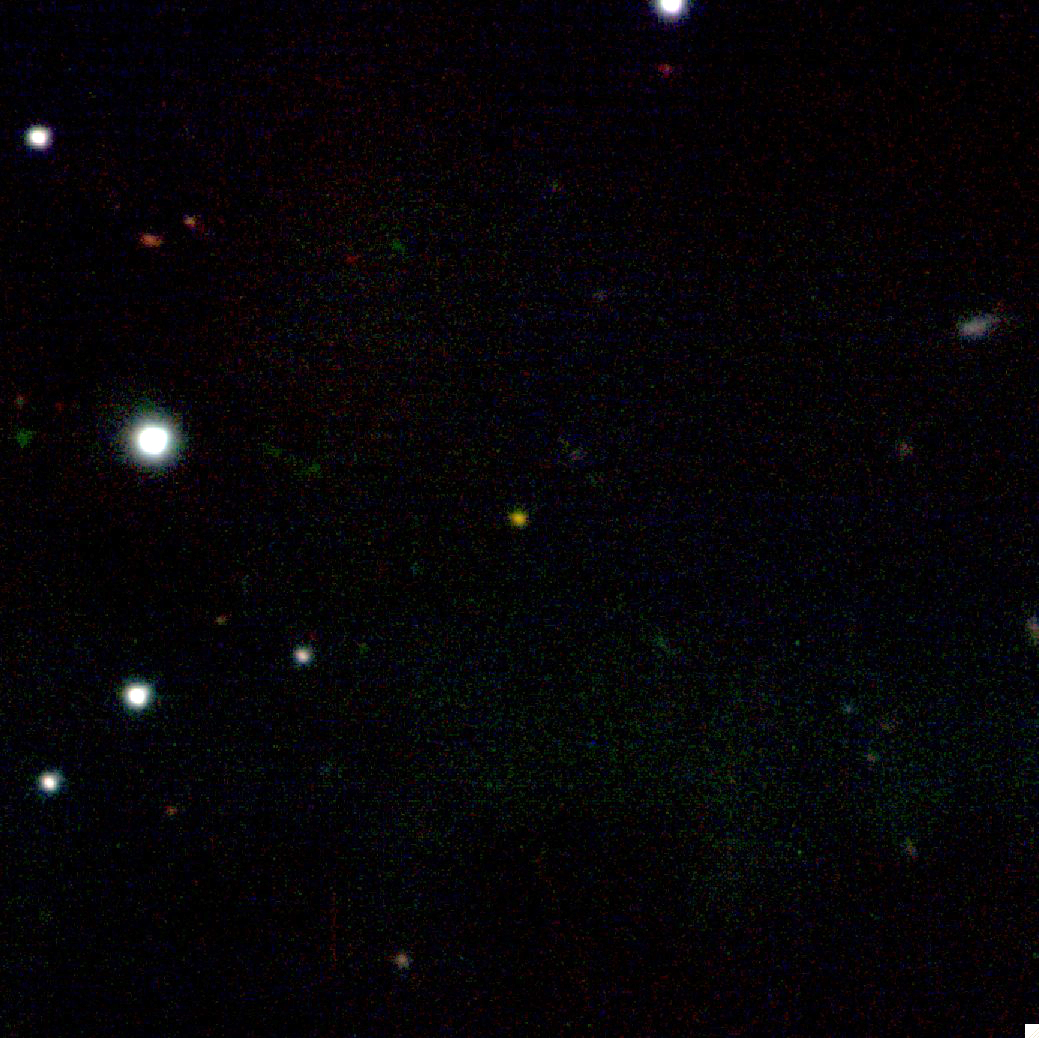Image List
-

Data from Swift's Ultraviolet/Optical (blue, green) and X-Ray (orange and red) telescopes are merged in this image. No visible light accompanied the burst, which alone suggests great distance. This image is 6.3 arcminutes across. Credit: NASA/Swift/Stefan Immler
NASA/Swift/Stefan Immler -

This diagram shows the distribution of redshifts, and corresponding age of the Universe, for gamma-ray bursts detected by NASA's Swift satellite. The new GRB 090423 at a redshift of z=8.2 easily broke the previous record for gamma-ray bursts, and also exceeds the highest redshift galaxy and quasar discovered to date, making it the most distant known object in the Universe. GRB 090423 exploded on the scene when the Universe was only 630 million years old, and its light has been traveling to us for over 13 billion years.
Edo Berger (Harvard-Smithsonian CfA) -

The fading infrared afterglow of GRB 090423 appears as a yellow dot in the center of this false-color image taken with the Gemini North Telescope in Hawaii. The burst exploded 13.035 billion light-years away and is the farthest cosmic explosion yet seen.
Penn State University/Harvard University/Gemini Observatory/NSF